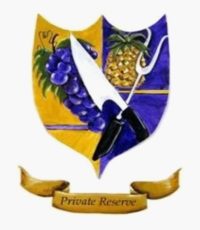William Kavney Cellars – Wines with a tough exterior and a loving interior
Cabernet Sauvignon, Sonoma County, 2016
Varietals: Cabernet Sauvignon (96%), Tempranillo (2%), Petit Verdot (2%),
Appellation: Sonoma County: Alexander Valley (80%), Sonoma County (5%), Lodi (15%)
Aging : 20 months in French oak
This 2016 Sonoma County Cabernet Sauvignon starts with dark fruit on the nose, accompanied by chocolate, spicy mission fig, and a hint of black cherries. In the mouth, the wine shows smoky espresso, blackberries, and ripe cherries, along with clove and white pepper coming through from the char of French oak. As the wine finishes on the palate, a lingering taste of delicate brown sugar is noted. Enjoy this serious Cabernet with grilled NY steaks with herbed butter, alongside roasted potatoes and sautéed garlic spinach.
Pinot Noir, Russian River, 2016
Appellation: The Russian River Valley (AVA) is the heart of the Sonoma County AVA and runs from the coast along the river all the way to th beautiful village of Santa Rosa. It was founded in 1983 and is most famous for Chardonnay, Pinot Noir and Zinfandel though there are many other varietals planted. The distinct microclimates and diverse soils, combined with warm days and cool nights, make growing conditions ideal for producing Pinot Noir with dense rich fruit flavors and fine aromatics.
Geography: The valley is the story of a battle between the Pacific and North American tectonic plates with the wine lover being the winner. The two main soil types are “Goldridge” and “Sebastopol”, Goldridge being better for Chardonnay and Sebastopol being my preference for Pinot Noir because of its higher Clay content and better drainage.
Winemaking: Hand harvested and sorted the grapes are chilled to 45 degrees Fahrenheit before crushing and placing into one ton crates for a three days. After three days of cold soaking, the grapes were inoculated with a proprietary blend of yeasts and allowed to ferment with a temperature control over the course of five days. The cap was hand punched over three times a day during this period. After 31 days, the wine underwent malolactic fermentation and was racked into a combination of center of France oak barrels that were used two and three times. The wine was in the barrel for 12-15 months before bottling.
Tasting Notes: The color is akin to cranberry juice with notes of dried cherries, four fruit preserves, pomegranate, cranberry dressing and a hint of vanilla in the background. This wine loves the table just as much as me, but has a denser type of fruit layer that just jumps from the glass. It has a bit more fruit and less earthiness than previous pinots I have made but that is the beauty of an agricultural product, it tends to walk its own path when you don’t get in its way. Best when decanted for 30-45 minutes before serving. Serve in big Burgundy wine glasses at 60-64 degrees Fahrenheit for greatest enjoyment.
Chardonnay, Sonoma County, 2012
80% Russian River, 20% Sonoma Carneros
Winemaking: After hand harvesting in the early morning and sorting the grapes are chilled to 40 degrees Fahrenheit before crushing and placing into small two ton fermenters. Immediately after, the must was inoculated with a proprietary blend of yeasts and allowed to ferment with a temperature control over the course of five days. After 17 days, half of the wine was aged on the lees in neutral center of France oak barrels. The other half was left in tank. After 9 months, the wine underwent malolactic fermentation and was blended together for further aging in 2nd and third use French Oak. The wine was in the barrel for nine more months before bottling.
Tasting Notes: Straw colored with notes of pineapple, green apple, fig and subtle notes of toasty creamy oak. Serve in big Burgundy wine glasses at 45-49 degrees Fahrenheit for greatest enjoyment.

